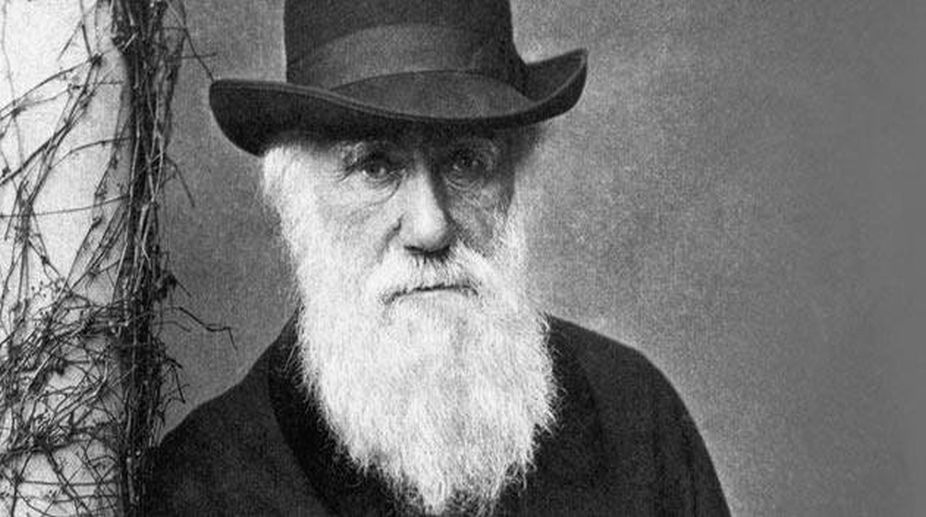The famous naturalist, Charles Darwin, said that when we view individual plants of the same variety or sub-variety of our older cultivated plants and animals, we would observe that they differ more from each other than individuals of any one species.
He explains that these differences arise because they have been raised in different conditions and changes begin, which can continue for generations.
Advertisement
Our oldest cultivated plants, such as wheat, can produce new forms, as with domestic animals, which can take on different features, such as a Jersey or Holstein cow.
To consider the distribution of organic beings across the earth, the first significant factor we observe is that neither the similarity nor the dissimilarity of the beings of various regions can be accounted for by their climatic or other physical conditions. Darwin asserted that all authors agree the most fundamental divisions in geographical distribution are those between the New and Old Worlds.
Yet, if one travels over the American continent from the central parts of the US to its farthest southern point, they will find the most diversified conditions — the most humid districts, arid deserts, lofty mountains, grassy plains, forests, marshes, lakes and rivers.
Darwin writes of the parallelism in the conditions of the Old and New Worlds, yet how widely different their living productions are. In the southern hemisphere, large tracts of land in Australia, South Africa and western South America — between latitudes 25 degrees and 35 degrees — reveal parts extremely similar in all their conditions yet it would not be possible to point out three faunas and floras more utterly dissimilar.
The almost uniform conditions in these latitudes will not reveal any significant dissimilarity between species. However, AK Mandrelle, a former teacher of St Paul’s School, Darjeeling, who now lives in Argentina, writes to articulate that although northern Argentina, Paraguay, and southern Brazil are within the same latitudes, some animals and plants like guava are found only in Paraguay.
Mandrelle’s observations are relevant, and this former teacher’s erudition, actually proves how he introduced a part of botany into his subject, biology. It evokes his brilliance, which made him among the first to teach botany in the school — a rare honour in St Paul’s 200-year history.
Another significant factor is that barriers of any kind, which impede migrations or even pollination, are related quite closely to the differences between the productions of various regions.
This great difference, writes Darwin, is in all the terrestrial productions of the New and Old Worlds, except the northern parts, where the land almost joins.
The term “Old World” is used in the West to refer to Africa, Europe and Asia in the eastern hemisphere whereas “New World” is a name used for the majority of the Earth’s western hemisphere, particularly the Americas including the Caribbean islands.
A similar law applies in the seas. No two marine faunas are more distinct, with barely a fish or crab in common, than those of the eastern and western shores of South and Central America.
Yet those faunas are separated only by the narrow and impassable Isthmus of Panama. Proceeding further westward from the eastern islands of the tropical parts of the Pacific, one sees no impassable barriers and there are many islands, which serve as halting places for migrating species.
After travelling over a hemisphere, one comes to the shores of Africa. Darwin wrote that barely one fish is common to the faunas in the sea of Eastern and Western America, which describes dissimilarities. However, many fish and shell fish are common to the eastern islands of the Pacific and the eastern shores of Africa.
These similarities and dissimilarities appear to be governed by the absence or presence of factors, such as impassable barriers or halting places like islands where species rest and breed, often at the end of their migratory route.
The most striking and important fact in regard to inhabitants of islands is their affinity to those of the nearest mainland without actually being of the same species and Darwin exemplifies this with the Galapagos Archipelago situated under the Equator between 500 to 600 miles from the shores of South America.
There, products of land and water reflect the American continent in similarity. There are 26 land birds and Darwin asserts that 25 of those are distinct species.
Yet their similarity with many American birds is striking including their calls. There are similarities between species in the Galapagos and those in the American continent. There is nothing in the conditions of life in the Galapagos or even the climate, which resembles the conditions of the South American coast. On the other hand there is resemblance in the volcanic nature of the soil. But what an absolute difference in their inhabitants! Darwin’s erudite observation compares the creatures of the Galapagos to America and the inhabitants of Cape de Verde Islands are related to those of Africa.
He expands his thoughts to flora — the plants of the Kerguelen Islands though located nearer to Africa than America are related closely to America and this island was stocked by seeds brought with earth and on icebergs that drifted in on prevailing currents. Similarly New Zealand’s plants are related to those of Australia, the nearest mainland. These locations were literally clothed with vegetation before the glacial period. Darwin arrived at Galapagos in September 1835, when he disembarked on San Cristobal.
He spent five weeks in the Galapagos when he made careful observations about the geology and ecology of the islands. His notes became a valuable resource that crystallised in his book, The Origin of Species.











